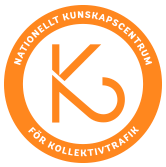This paper optimises the number of bus stops, and prices for car, bus and cycling in the busiest inner city corridor in Stockholm. We adopt the representative consumer approach and calibrate the current equilibrium using the quasi-linear utility function. We find that the number of bus stops is already close to optimal. Welfare would increase if the peak frequency was increased, if the bus fares were lowered and differentiated between long trips and short trips and, and that the toll for longer car trips was increased. The optimal toll for cyclists, and the welfare benefit from it, is small and does not compensate the transaction costs. The distributional effects of bus fare changes and higher car tolls are small because on one hand, high income groups place more value on travel time gains, but on the other hand, low income groups travel less frequently by car. Surprisingly, we find that in the welfare optimum, the bus service only requires a small subsidy due to congestion in the bus lane, crowding in the buses, and extra boarding and alighting time per passenger. The Mohring effect is limited because the demand, and thereby the baseline frequency, is already high.
